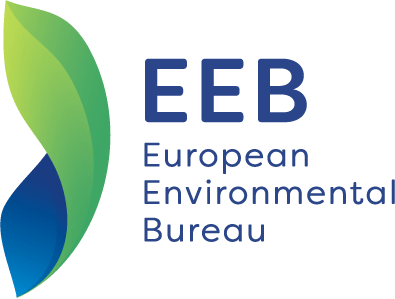Too little, too late: EU chemical reforms threaten to roll back public health protections
The European Commission’s new plan to overhaul the EU’s main chemical regulation, REACH, risks undoing two decades of progress in protecting people and nature from toxic substances.
On 3 April, the Commission presented proposed changes to EU Member State representatives at the 54th CARACAL meeting, calling them a ‘simplification’ of EU chemicals law. However, the draft reforms would introduce more red tape, delay action on dangerous substances, and closely reflect the demands of the chemical industry lobby.
Dolores Romano, Policy Manager for Chemicals at the European Environmental Bureau (EEB), said: “The Commission’s proposal is not only long overdue after decades of inaction, but also too little and in the wrong direction. The science on chemical harm has been clear for decades. Instead of finally delivering what was promised in REACH, the Commission is now proposing changes that favour industry convenience over public safety. This is a deeply worrying contradiction.”
The European Commission’s recent endorsement of the Antwerp Declaration, a document backed by Europe’s most polluting industries, as a sign that economic interests are being prioritised over the EU’s European Green Deal’s Chemicals Strategy for Sustainability.
“The Commission appears willing to trade long-term public health for short-term economic gain and reduced compliance costs for chemical producers,” Romano added.
One of the clearest signs of regulatory backsliding is the overlap between the Commission’s proposals and the industry’s 10-point plan to “simplify REACH”. In recent advertising campaigns across Brussels, CEFIC claims to support the European Green Deal. But a close analysis reveals the plan is a thinly veiled deregulation agenda.
Among the key proposals by CEFIC echoed by the Commission:
- Loosening rules for highly hazardous chemicals: CEFIC proposes “limiting the use of the Authorisation [i.e.regulatory] scheme” and creating more exemptions. In practice, this means fewer harmful substances would be phased out, while more companies would be allowed to keep using them – a change now reflected in the Commission’s draft.
- Delaying protection through early-stage filtering: CEFIC also recommends a “strategic discussion” at EU level before regulatory proposals are submitted. The Commission has mirrored this by adding a mandatory “upfront analysis” step – a move that would further delay or deter critical regulatory actions by member states.
ClientEarth legal expert Julian Schenten said: “The process for regulating chemicals in the EU is already a painfully slow one. This proposed ‘upfront analysis’ would only further delay decisions – which is ironic given that the stated aim is to simplify the process. Worse still, this proposed change would effectively allow the most dangerous chemicals to bypass the Authorisation system — the very mechanism designed to phase out substances of very high concern. That would undermine the core purpose of the system: to protect people from the most harmful chemicals.”
In addition, the Commission is backtracking in its Green Deal’s Chemical Strategy for Sustainability (CSS) commitments, including to:
- Ban all most hazardous chemicals in consumer products: One of the most critical tests of REACH’s effectiveness, phasing out the most dangerous substances in everyday products, is being diluted. Rather than reinforcing the fast-track restriction process under Article 68(2), also known as Generic Risk Assessment (GRA), the Commission appears poised to slow it down, in line with CEFIC’s demands.
- Generate data on hazards of polymers, this is to ask the chemical industry to provide data on the hazards of polymers, the building blocks of plastics. These chemicals are produced in highest volumes and people are universally exposed to them through microplastics. The Commission is debating whether to include a polymers registration, effectively backtracking on its previous commitment.
- Act on chemical mixtures: The Commission, aligning with CEFIC’s demands, is now considering applying the Mixture Assessment Factor (MAF) only to high-volume substances, undermining its CSS promise to reflect real-life exposure scenarios.
Although the Commission has promised that simplification will not come at the expense of safety, its current direction suggests it is yielding to pressure from polluting industries in the name of economic growth. Ironically, both CEFIC and the Commission speak of reducing complexity, but their proposals would likely increase red tape and delay essential protections. Though CEFIC paints REACH as a drag on competitiveness, its own data shows it makes up less than 3% of regulatory costs, far below the 30-40% from energy. In fact, REACH has strengthened the EU’s role as a global leader in chemical safety and innovation. REACH marked a turning point in EU chemical regulation and has not been significantly revised since its creation. The stakes of this review are high.
Today, the European Environmental Bureau (EEB) publishes an analysis that shows how CEFIC’s key demands are being echoed in the Commission’s latest proposals and the potential implications for human and environmental health. These are available here:
- Translating lobby speak: What chemical industry’s ‘simplification’ plan really means
- CEFIC asks included in Commission’s proposals shared during CARACAL 54 meeting
ENDS
Contact information:
- Beatriz Ortiz Martinez, Senior Communication Officer for Chemicals, European Environmental Bureau, beatriz.ortiz-martinez@eeb.orb
NOTES TO EDITORS:
CARACAL (Competent Authorities for REACH and CLP) It’s a formal expert group set up by the European Commission to assist in the implementation of two major EU chemical regulations: REACH (Registration, Evaluation, Authorisation and Restriction of Chemicals) and CLP (Classification, Labelling and Packaging of substances and mixtures).

